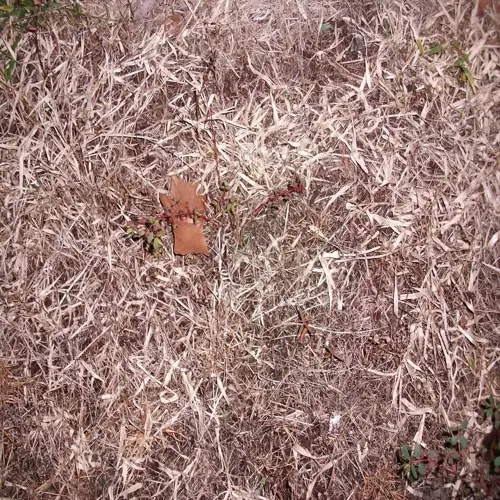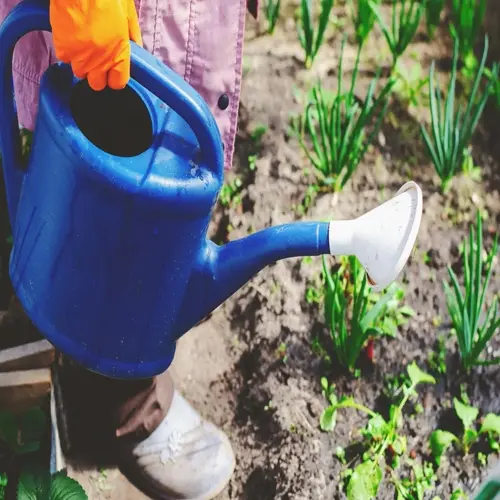Clay Soil Amendments: The Ultimate Guide

Written by
Nguyen Minh
Reviewed by
Prof. Charles Hartman, Ph.D.Effective clay soil amendments transform dense clay into fertile planting beds.
Organic compost improves structure while gypsum enhances drainage without pH change.
Always test moisture levels before amending - never till wet clay.
Plant clay-tolerant species like daylilies and viburnum for guaranteed success.
Avoid adding sand to clay, which creates concrete-like compaction issues.
Amend top 12 inches deeply and allow 1-3 seasons for transformation.
Article Navigation
If the garden area you have to work with has heavy clay soil, understanding clay soil amendments is really important. Clay particles are 0.002mm, 100 times smaller than sand particles. The minute size of these particles creates irritating compaction that chokes roots and hinders drainage. I have seen gardens where rainwater sits for days because the clay does not absorb moisture correctly.
You can improve tough clay soil using organic solutions, such as compost, or inorganic choices, like gypsum. These amendments will create air pockets to help roots breathe over time. In my garden, I realized that patience is key. Real garden soil improvement takes seasons, not days! Don't be fooled by quick schemes.
Understanding Clay Soil
Clay particles are tiny, measuring just 0.002mm across. To put this in perspective, if a grain of sand were magnified 100 times the size of a clay particle, it would be about the size of a marble. With packed particles, it makes dense compaction and difficult compaction. Identifying clay soil is a straightforward process. Take a handful of moist soil. Squeeze it. If it forms a ribbon and holds its shape, you have clay.
Clay's Cation Exchange Capacity operates like a nutrient magnet. It binds to critical minerals more effectively than sandy soils, making them accessible to plant roots. Therefore, you'll be applying fewer fertilizers. There's a catch, though. Clay retains water during droughts, while it becomes boggy with heavy rains. I've seen plants drown in heavy clay during a very wet spring.
Examine your garden visually. Large cracks that appear during dry spells typically indicate a high clay content. I stressed over large cracks the first season I gardened, only after I learned they indicate good nutrient-holding capacity and bad drainage. Once I learned to balance these characteristics, I was more productive working with clay instead of against it.
Squeeze Test
- Take a moist soil sample in your hand and squeeze firmly
- Clay maintains shape when poked and feels smooth/sticky
- Sandy soil crumbles immediately while silt holds shape briefly
Visual Indicators
- Reddish color indicates iron oxide common in clay soils
- Surface cracks form during dry periods due to shrinkage
- Thick clods that resist breaking when dry and stick to tools when wet
Professional Testing
- Collect samples from 6-8 locations at 6 inch depth
- Extension offices provide texture analysis through soil ribbon test
- Lab tests measure exact clay percentage and nutrient profiles
Water Infiltration Test
- Dig a 12-inch hole and fill with water to measure drainage rate
- Clay soils drain slower than 0.5 inches per hour
- Compare results to sandy soils that drain 2+ inches per hour
Ribbon Test
- Roll moist soil between thumb and forefinger to form a ribbon
- Clay forms ribbons 2+ inches long before breaking
- Loam soils break at 1-2 inches, sandy soils won't ribbon
Top Amendment Strategies
Organic amendments such as compost and aged manure naturally improve clay. Spread 3-4 inches of compost in your planting area. That's about 7-10 centimeters. It will feed earthworms and create air pockets.. I've seen gardens that have tripled their harvests after only one season of compost applications. However, note that all of this decomposes and needs to be replenished on an annual basis.
Inorganic alternatives can utilize gypsum in a significantly different manner. Use 20 pounds per 100 square feet (which is equivalent to 9 kilograms per 9.3 square meters). Gypsum will instantaneously chemically loosen the clay without altering the pH. Gypsum will establish long-term drainage channels. I've used it successfully on athletic fields. Be sure to test your soil first, as gypsum is only effective when the clay is sodium-rich.
Do NOT work wet clay soil. This compacted the soil permanently. Always perform a squeeze test and soil sampling. If you can ribbon it or it sticks to your tools, then you should wait for it to dry. I ruined my first garden out of impatience. Now I keep a soil probe in my pocket to test moisture.
Perlite and calcined clay are very specialized resources. I mix perlite into the container at a 15% volume. I do not use this product in large gardens. Calcined clay is most appropriately used for potted specimen plants. Both perlite and calcined clay provide long-term aeration but are not suitable for large areas. These products are saved for my treasured orchids.
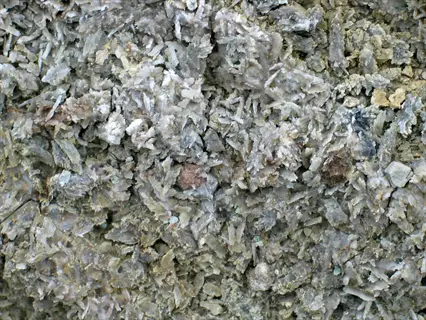
Gypsum
- Mechanism: Calcium sulfate releases ions that bind clay particles into larger aggregates, creating vital pore spaces for root growth and water movement.
- Application: Apply 20-30 pounds per 100 square feet (9-14 kg per 9.3 m²) evenly across dry soil before rainfall or irrigation.
- Benefits: Dramatically improves drainage and soil structure without altering pH levels, making it safe for most plants.
- Drawbacks: Limited effectiveness in soils lacking sodium, requiring soil testing before application to ensure suitability.
- Timeline: Visible soil structure improvement typically occurs within 3-6 months after thorough integration with moisture.
- Caution: Gypsum supplements rather than replaces organic matter; always combine with compost for comprehensive soil rehabilitation.
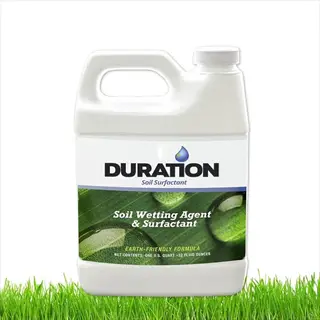
Surfactants
- Mechanism: These compounds reduce water's surface tension, allowing moisture to penetrate dense clay layers instead of pooling on the surface.
- Application: Dilute concentrated solutions per label instructions, typically 1-2 ounces per gallon (30-60 ml per 3.8 L), applying to dry soil.
- Benefits: Provides immediate relief for water-repellent clay, enabling deeper irrigation penetration and reducing runoff significantly.
- Drawbacks: Effects are temporary, lasting 4-8 weeks depending on rainfall, requiring regular seasonal reapplications.
- Active Ingredient: Ammonium lauryl sulfate is the most common compound, breaking down naturally without soil residue concerns.
- Usage: Ideal for rehabilitating severely dry or hydrophobic clay soils where water beads rather than absorbs.
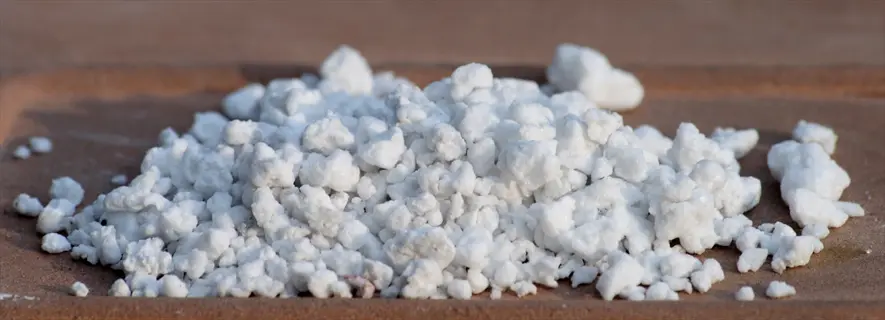
Perlite
- Mechanism: This expanded volcanic mineral creates permanent air pockets within soil, preventing compaction while maintaining excellent drainage.
- Application: Incorporate at 15-20% volume in container mixes, avoiding field use where it becomes impractical for large areas.
- Benefits: Significantly enhances aeration for potted plants' roots while maintaining consistent moisture retention between waterings.
- Drawbacks: The lightweight material floats to the surface during heavy watering, requiring occasional reincorporation.
- Texture: White expanded particles ranging 0.06-0.2 inches (1.5-5 mm) provide optimal airspace without displacing soil.
- Limitation: Primarily suitable for container gardening due to cost and application challenges in open garden beds.
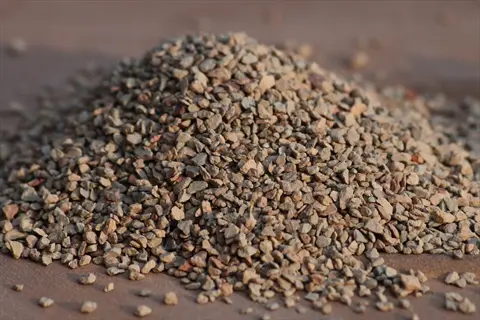
Calcined Clay
- Mechanism: Heat-treated clay particles absorb excess moisture like sponges while maintaining rigid structure under pressure.
- Application: Use at 10-15% soil volume, mainly for specialized applications like sports fields or potted specimen plants.
- Benefits: Provides superior drainage in high-traffic areas where soil compaction normally occurs after repeated use.
- Drawbacks: Prohibitive cost for large garden applications, with alternatives like compost being more economical.
- Composition: Porous ceramic granules sized 0.16-0.3 inches (4-8 mm) create lasting drainage channels in growing media.
- Alternative: Best reserved for custom potting mixes rather than direct amendment of native clay soils.
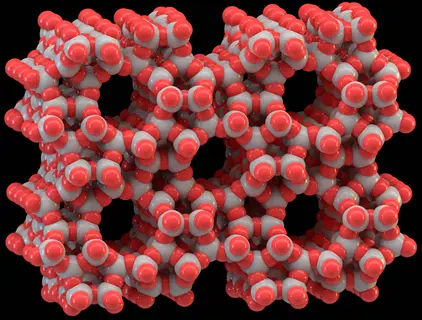
Zeolite
- Mechanism: Natural crystalline aluminosilicates trap nutrients and water within their honeycomb structure, releasing them slowly.
- Application: Apply 5-10 pounds per 100 square feet (2.3-4.5 kg per 9.3 m²), working into topsoil before planting.
- Benefits: Reduces fertilizer leaching by 20-30% while maintaining consistent moisture during dry periods.
- Drawbacks: Limited regional availability increases costs, with some products containing inconsistent particle sizes.
- Mineral Source: Volcanic-origin minerals mined globally, with clinoptilolite being the most effective horticultural variety.
- Longevity: Provides 5-8 years of continuous benefits before requiring reapplication due to gradual mineral breakdown.
Moisture Control
- Work soil only when dry enough to crumble in hand
- Wet clay amendments create permanent compaction damage
- Test moisture: Soil shouldn't form ribbons or stick to tools
Seasonal Timing
- Best period: Late summer to early autumn
- Allows 4-6 months for amendments to integrate before spring
- Avoid winter application in freezing climates
Depth Requirements
- Mix amendments into top 10-12 inches (25-30 cm)
- Shallow application creates drainage barriers at depth
- Use broadfork for minimal soil structure disruption
Material Safety
- Use only EPA-certified biosolids (Class A)
- Avoid fresh manure near edible crops due to E. coli risk
- Wear gloves/N95 mask when handling fine particulate amendments
Prohibited Amendments
- Never add sand to clay: Creates concrete-like hardness
- Avoid peat moss: Increases acidity and decomposes too rapidly
- Reject uncomposted wood products: Steals soil nitrogen
Step-by-Step Improvement Process
It is advisable to test your soil before undertaking any amendment work. Suppose you're going to take samples from 5-8 places at a 6-inch depth, that is about 15 centimeters. You should have them analyzed by an extension lab. My experience tells me this saves you a lot of wasted effort. Know your pH and nutrient levels first. Then, make targeted amendments based on deficiencies.
Break up the top 10-12 inches (25-30 centimeters) of soil. Go with a broadfork, not a tiller. This keeps soil structure intact while alleviating compaction. The target is late summer or early fall. Cooler temperatures help for amendments to integrate before spring planting. Always do a check for moisture first. Use the squeeze test.
Amendments based on your testing results. Apply 3-4 inches of compost uniformly. 7-10cm. For gypsum, you can apply 20 pounds per 100 square feet. (9 kilograms per 9.3 square meters) Mix thoroughly, but be careful not to disturb the soil too much. I water lightly afterwards to settle the materials without washing them away.
Plant properly in amended clay soils. Dig holes three times wider than the root balls. Keep planting depth the same. Backfill with a 50/50 mixture of native soil and amendment. Water thoroughly right after planting. Mulch with 2-3 inches of bark chips / 5-7.6cm. This prevents crusting.
Step 1: Soil Testing
- Collect soil samples from 5-8 locations at 6-inch depth (15 cm)
- Use extension service lab analysis for pH, nutrients, and salt levels
- Identify specific deficiencies to customize amendment selection
- Wait 1-2 weeks for results before proceeding to next step
Step 2: Site Preparation
- Wait for dry conditions: Soil should crumble when squeezed
- Remove weeds and debris using garden hoe or hand tools
- Loosen top 10-12 inches (25-30 cm) with spading fork or broadfork
- Avoid rototilling wet clay to prevent compaction damage
Step 3: Amendment Application
- Spread 3-4 inches (7.6-10 cm) of organic matter evenly
- For gypsum: Apply 20 lbs per 100 sq ft (9 kg per 9.3 m²)
- Mix thoroughly using shovel, ensuring uniform distribution
- Water lightly to settle amendments without saturation
Step 4: Planting Technique
- Dig holes 2-3 times wider than plant root balls
- Place plants at original soil level to prevent stem rot
- Backfill with native soil-amendment mix (50/50 ratio)
- Water deeply immediately after planting
Step 5: Mulching & Maintenance
- Apply 2-3 inch (5-7.6 cm) bark mulch around plants
- Water deeply once weekly instead of frequent light watering
- Monitor plants for yellowing leaves indicating overwatering
- Reapply compost top-dressing every 6 months
Plant Selection Guide
Go with clay-tolerant shrubs, such as Viburnum and Red Twig Dogwood. They tolerate wet roots, are hardy in zones 2-9, and have deep roots that dig into heavy soil to minimize erosion. I have planted them along the property's edge where drainage is poor. They bloom from spring through summer and provide year-round structure.
Choose perennial plants that have physical characteristics of deep taproots. Daylilies and Coneflowers shine in clay conditions. They both root deep into the soil, breaking any compaction. These winter over in zones 3-9 and add color to summer gardens. Add to this some Russian Sage for drought tolerance, and the silver foliage flourishes where other plants fail.
Annuals such as Zinnias and Marigolds will bring color to clay gardens. Their shallow root systems will be able to withstand heavy soil when improved. Plant seeds after the last frost, and you will have a succession of blooms all summer long. I plant these annuals with cover crops like winter rye. Cover crops will improve the soil in the off-season while naturally suppressing weeds.
Inserting cover crops in your crop rotation plan in a strategic way is absolutely ideal. Daikon Radishes dig 24 inches down and disturb the subsoil. Clover fixes nitrogen to improve future fertility. Plant them in the fall after harvest, and they will disintegrate by spring. In this way, you are sustainably preparing and ameliorating your clay garden beds.
Clay-Tolerant Shrubs
- Viburnum: Handles wet winters (Zones 2-9), 6-10 ft height
- Rose of Sharon: Summer blooms, drought-resistant after establishment
- Spirea: Spring flowers, fibrous roots prevent erosion
- Red Twig Dogwood: Winter interest, thrives in boggy areas
- Buttonbush: Globular flowers, attracts pollinators to wet sites
Resilient Perennials
- Daylily: Tolerates drought/waterlogging, blooms June-August
- Coneflower: Deep taproots break clay, attracts pollinators
- Russian Sage: Fragrant, deer-resistant, 24-36 inch height
- Hostas: Shade-loving, withstands heavy soil compaction
- Bee Balm: Showy flowers, spreads in moist clay conditions
Annuals for Heavy Soil
- Zinnias: Fast-draining roots, continuous summer blooms
- Marigolds: Pest-repellent, thrive in heat and clay
- Salvia: Spike flowers, tolerate both dry/wet clay cycles
- Petunias: Trailing varieties ideal for amended clay beds
- Cosmos: Feathery foliage, self-seeds in undisturbed clay
Cover Crops for Improvement
- Clover: Fixes nitrogen, deep roots aerate subsoil
- Winter Rye: Prevents erosion, adds organic matter when tilled
- Daikon Radish: 24-inch taproots shatter compaction
- Buckwheat: Quick growth smothers weeds in one season
- Hairy Vetch: Winter-hardy legume enriches soil nitrogen
Trees for Clay Landscapes
- River Birch: Peeling bark, tolerates wet feet (Zones 4-9)
- Hawthorn: Spring blooms, adaptable to dense soils
- Eastern Red Cedar: Evergreen, erosion control on slopes
- Willow: Rapid growth for waterlogged areas, 30-50 ft spread
- Bald Cypress: Deciduous conifer for swampy conditions
Common Mistakes to Avoid
Mixing sand with clay yields a concrete-like soil that compacts the roots destructively. This unrecoverable mistake will cause your soil's drainage to remain an ongoing problem. Plants will struggle to establish immediately, and in the long term, it will take decades of compaction. Rather, use compost, applied at a depth of 3-4 inches for safe, effective structural improvement.
Tilling wet clay can completely damage the soil's structure. The result is immediate compaction, which severely limits root growth by approximately half. The damage lasts for 5 to 10 years. I learned this the hard way when my spring garden didn't take off. Always wait until the soil crumbles in your hand before working the soil!
Excessive fertilizer causes toxic salt buildup in just weeks, resulting in burned leaf edges and short stems on plants. Long-term, it is harmful and contaminates the groundwater. To minimize, apply at only half of the recommended fertilizer dose. Switch to slow‐release organic options for safer nutrition.
Hollow amendments create waterlogged catastrophes. When you only amend the surface level to 4 4-inch depth, roots hit a wall. Saturation followed by heavy rain causes the plants to drown. The solution is amended to at least 10-12 inches, or approximately 25-30 centimeters, in depth. A broadfork is great for deeply integrating materials.
Adding Sand to Clay
- Mixing sand creates concrete-like hardness as particles fill clay gaps
- This irreversible compaction reduces drainage by over 70% permanently
- Solution: Use organic matter instead - compost improves structure safely
Tilling Wet Soil
- Working saturated clay destroys natural soil aggregates and pore spaces
- Causes 5-10 years of compaction, reducing root growth by 50-80%
- Solution: Wait until soil crumbles when squeezed - typically 3 dry days
Over-Fertilizing
- Excess salts bind tightly to clay particles, creating toxic buildup
- Burns plant roots and reduces water uptake within 2-3 weeks
- Solution: Apply half recommended dose; use slow-release organic options
Shallow Amendment
- Mixing only top 2-4 inches creates drainage barriers at root level
- Causes waterlogging that drowns plants after heavy rains
- Solution: Incorporate amendments to 10-12 inch depth (25-30 cm)
Ignoring Drainage
- Planting water-sensitive species in boggy areas guarantees failure
- Leads to root rot diseases like phytophthora within one season
- Solution: Select water-tolerant plants or install French drains first
5 Common Myths
Adding sand to clay soil improves drainage because it creates space among densely packed particles.
This false assumption destroys clay soil irreparably: sand particles (0.05-2mm) fill the spaces between tiny clay particles (0.002mm), thus compacting like concrete and reducing drainage by over 70%. Instead, organic amendments such as compost create stable aggregates of sand and clay particles using microbial action within the soil that improves pore space without density problems. Always test your soil texture before you amend, and prioritize materials that increase biological activity rather than the mineral content of the soil.
Clay soils need more fertilizer than other soil types because nutrients get trapped.
Clay's high Cation Exchange Capacity (15-40 cmol+/kg) retains nutrients better than sandy soils, requiring 30-50% less fertilizer. Excess applications cause salt buildup exceeding 4 dS/m, burning roots and contaminating groundwater through leaching. Apply slow-release organic options at half the manufacturer's rate and conduct annual soil tests to maintain optimal N-P-K levels without toxicity. Remember that healthy microbial activity in clay makes nutrients more available to plants naturally.
Tilling clay soil frequently breaks up compaction and improves long-term structure.
Repeated tilling destroys clay's natural aggregates and pore spaces, creating subsurface compaction layers that persist for 5-10 years and reduce oxygen levels below 10%. This suffocates roots and decreases water infiltration rates by over 60%. Instead, apply 3-4 inches of compost in autumn to 12-inch depth, allowing earthworms and microbes to naturally aerate soil. Use broadforks sparingly only when soil is dry, preserving the delicate structure clay needs for drainage.
Peat moss is the best amendment for clay because it lightens dense soil quickly.
Peat moss decomposes rapidly in clay's alkaline pH (7.5-8.5), creating acidic pockets that collapse within months while worsening drainage as particles break down. Its harvesting also damages carbon-storing wetland ecosystems globally. Sustainable alternatives like coconut coir maintain structure for 2-3 years, improve water retention without pH disruption, and support soil biology. Gypsum or composted bark offer better long-term solutions for improving clay porosity and root penetration.
Clay soils are not hospitable to productive gardens and should be replaced with topsoil.
Clay's nutrient and moisture holding capacity boasts even higher vegetable yields than sandy soils, up to 30% greater when improved. If you improve clay soil with 3-4 inches of compost incorporated at 12-inch depth, it will be suitable for vigorous plant growth and will stay moist even in drought conditions. Many native species like daylilies and viburnum will flourish without amendments due to clay's natural stability. You shouldn't completely replace clay soil with topsoil, because topsoil often contains weed seeds and most importantly, replacing it with topsoil disturbs already established soils that are contributing to great improvements over many seasons!
Conclusion
Clay soil has several secret advantages, including its ability to retain nutrients and resist drought. Clay's stable structure keeps roots safe during dry seasons. I have observed that clay gardens tend to survive heat waves better than sandy gardens. Take advantage of these natural characteristics by improving drainage and building up the soil.
Transition requires patience. Allow one to three growing seasons for the amendments to assimilate fully. My first clay garden initially performed poorly. By the second year, I was harvesting award-winning tomatoes from garden soil that looked like it had no hope. If you maintain consistent effort, it will pay off.
Your heavy soil has untapped potential. With the proper amendments, it can be more productive than the lighter soils. One client cultivated award-winning roses in what was once a boggy patch of clay. Your garden's potential is waiting for your stewardship.
See clay as a latent resource instead of a dilemma. When stewarded correctly, clay's inherent richness provides phenomenal growth. Take baby steps, metered observations, and note the changes, experiencing great delight in each season. A very bountiful garden starts here, at the point of deciphering clay.
External Sources
Frequently Asked Questions
What is the best amendment for clay soil?
The optimal amendments depend on your goals:
- Organic compost improves structure and nutrient retention long-term
- Gypsum enhances drainage without altering soil pH levels
- Coconut coir provides sustainable moisture control
- Perlite creates permanent aeration pockets in garden beds
- Aged manure offers rapid nutrient release
How often should clay soil be amended?
Amendment frequency depends on soil condition and plant needs:
- Apply organic matter annually before planting seasons
- Gypsum requires reapplication every 1-3 years
- Test soil annually to monitor nutrient levels
- Top-dress with compost every 6 months for maintenance
- Avoid excessive tilling to maintain soil structure
Can coffee grounds improve clay soil?
Coffee grounds offer limited benefits with important considerations:
- They provide nitrogen but decompose too rapidly
- Acidity can disrupt clay's alkaline pH balance
- Must be thoroughly composted before application
- Best mixed with bulkier organic materials
- Exclusive use may create drainage barriers
How do you improve clay soil drainage?
Effective drainage improvement involves multiple strategies:
- Incorporate gypsum to create pore spaces
- Add compost to enhance soil aggregation
- Install French drains for chronically wet areas
- Plant deep-rooted species that break up subsoil
- Avoid sand which worsens compaction
What plants grow best in clay soil?
These clay-tolerant species thrive in heavy soils:
- Shrubs: Viburnum, Rose of Sharon, Red Twig Dogwood
- Perennials: Daylilies, Coneflowers, Russian Sage
- Trees: River Birch, Hawthorn, Bald Cypress
- Annuals: Zinnias, Marigolds, Salvias
- Cover crops: Clover, Daikon Radish for soil improvement
Is tilling necessary for clay soil amendment?
Tilling is often counterproductive and alternatives exist:
- Tilling wet clay causes permanent compaction damage
- Use broadforks for minimal soil disruption
- Apply no-till methods with surface compost layers
- Leverage earthworms for natural aeration
- Plant deep-rooted cover crops to break up subsoil
How does gypsum improve clay soil?
Gypsum works through specific chemical processes:
- Calcium ions bind clay particles into aggregates
- Creates pore spaces for better water movement
- Doesn't alter soil pH like lime does
- Reduces sodium content in saline soils
- Takes several months to show full effects
What mistakes should I avoid with clay soil?
Critical errors to prevent include:
- Adding sand which creates concrete-like hardness
- Working soil when wet causes compaction
- Shallow amendment creates drainage barriers
- Over-fertilizing leads to salt buildup
- Planting water-sensitive species in boggy areas
How long do clay soil amendments take to work?
Timelines vary significantly by amendment type:
- Organic compost shows benefits within one growing season
- Gypsum requires 3-6 months for structural changes
- Cover crops improve subsoil over winter months
- Earthworms need 1-2 seasons to establish
- Full soil transformation takes 2-3 years of consistent care
When is the best time to amend clay soil?
Optimal timing considers seasonal conditions:
- Late summer/early autumn allows winter integration
- Avoid frozen winter or waterlogged spring periods
- Apply before rainy seasons for natural incorporation
- Dry summer periods permit safe soil working
- Test soil moisture before any amendment work
